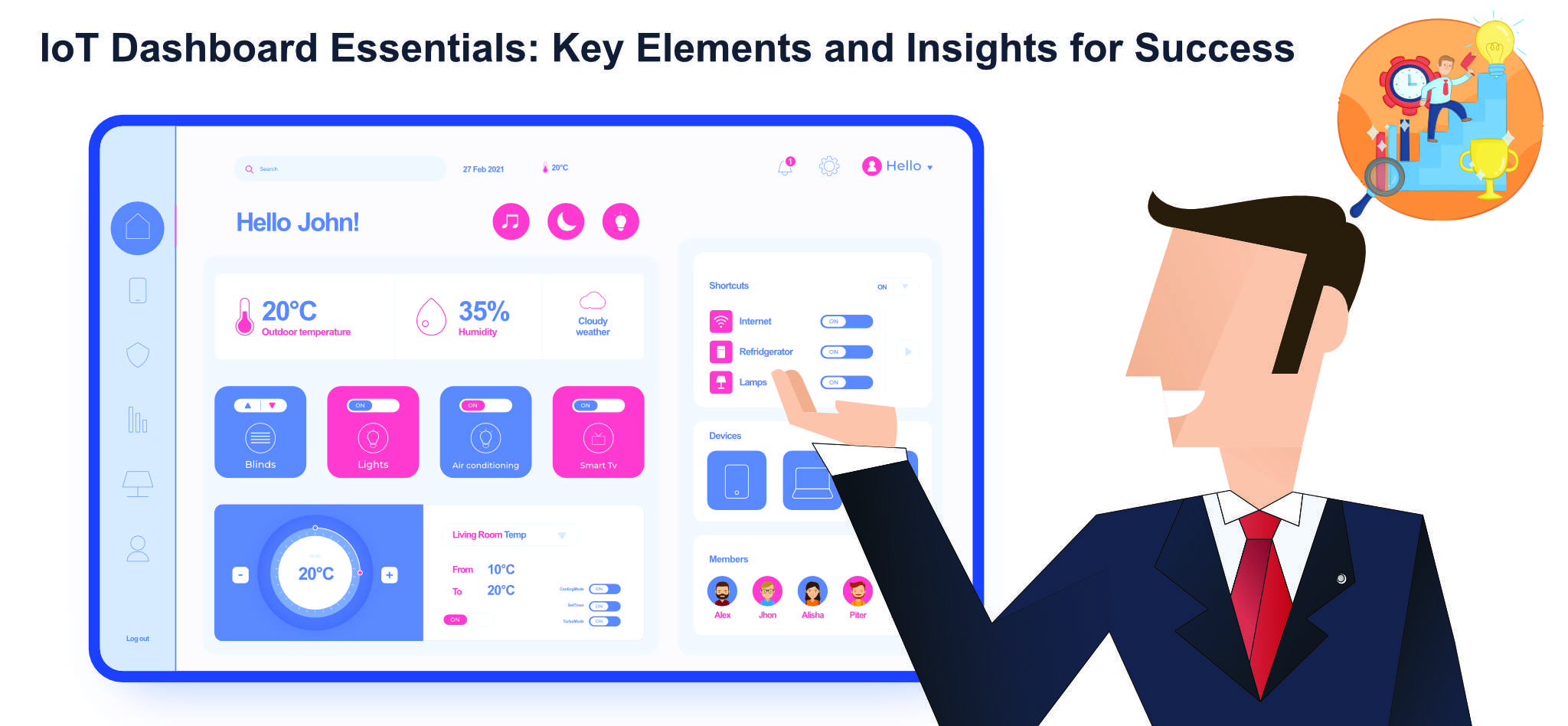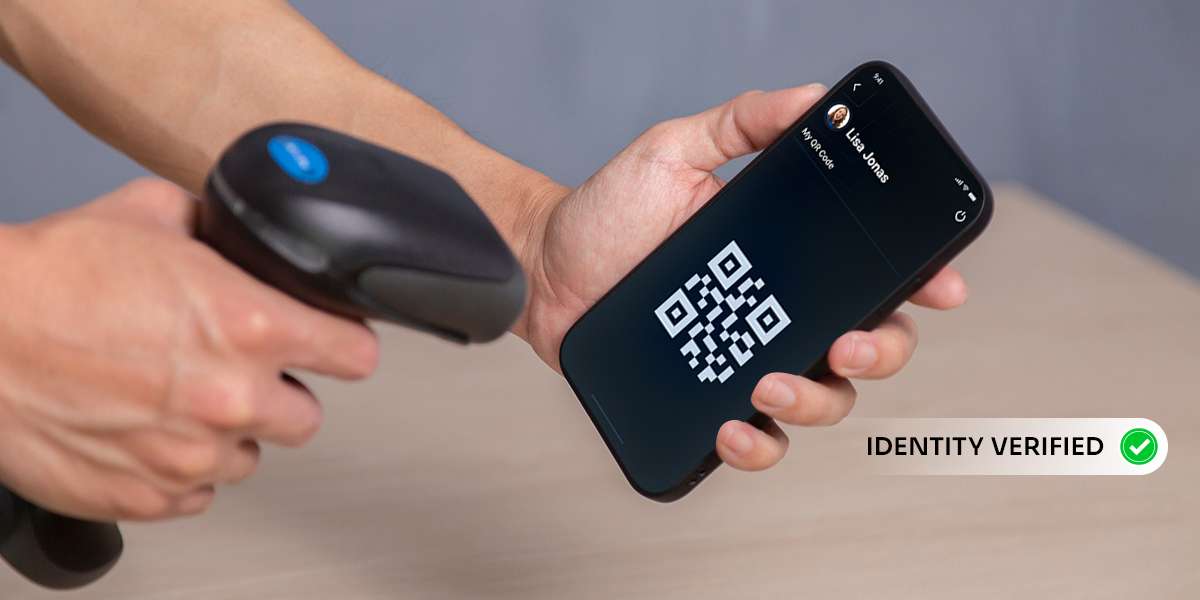Data plays a vital role in our everyday lives. You can’t make any successful decisions if you don’t have access to data.
Even deciding what to cook, depends on the information of what vegetables are in your refrigerator.
So, how can you make business decisions without comparing the data?
You must be wondering, why I’m talking about the importance of data under the title of IoT dashboard.
It’s because IoT dashboards provide us with data. When you employ IoT in your business, it becomes your ears and eyes. However, the data you receive from the various IoT devices and sensors can be overwhelming.
So, we always look for ways to make this data easy to understand. Creating an IoT dashboard is one solution.
These dashboards serve as the gateway to understanding and managing the vast streams of data generated by IoT devices.
In this blog, we’ll explore the essentials and best practices for creating an effective IoT Dashboard.
Let’s get started!
Why is an IoT Dashboard Important?
IoT dashboards fill the gap between raw data and actionable insights. They allow users to visualize, analyze, and interact with data from IoT devices in real time. Whether you’re monitoring industrial equipment, tracking environmental conditions, or managing a fleet of connected vehicles, an IoT dashboard gives you a comprehensive view of your IoT ecosystem
Elements of an IoT dashboard include:
- Data Visualization: IoT dashboards use charts, graphs, maps, and other visual elements to present data in a comprehensible format. These visualizations make it easier for users to interpret and gain insights from the data
- Real-time: Many IoT dashboards give real-time updates, allowing users to monitor IoT device status, sensor readings, or environmental conditions as they occur. This real-time information is vital for immediate response and decision-making.
- Interactivity: Interactivity is a crucial aspect of IoT dashboards. Users can interact with the data by drilling down into details, setting filters, adjusting parameters, and even controlling IoT devices directly through the dashboard.
- Security: IoT dashboards prioritize data security and access control. They implement authentication, authorization, and encryption to protect sensitive IoT data from unauthorized access and cyber threats.
- Alerts and Notifications: Dashboards can send alerts and notifications via various channels (email, SMS, etc.) to inform users about critical events, anomalies, or predefined thresholds being reached.
Best practices to follow for creating an IoT dashboard
To create a user-friendly and interactive IoT Dashboard you should know the key elements to include in your dashboard and key practices to follow.
We have discussed about key elements in a dashboard so now let’s move on to the best practices.
1. Data Visualization
The foundation of any IoT dashboard is data visualization. It’s crucial to select the right charts and graphs to represent your data effectively. Line charts are excellent for showing trends over time, while bar charts help compare values. Pie charts are suitable for displaying proportions, and heatmaps are ideal for spatial data.
2. Data Sources and Integration
Identify the sources of your IoT data, such as sensors, devices, or APIs. Ensure compatibility and connectivity with these data sources
Use APIs (Application Programming Interfaces) to gather data from various IoT devices and services. Integrate these APIs into your dashboard to create a unified view of your IoT ecosystem
Raw IoT data often requires preprocessing and cleaning to remove noise and errors. Implement data preprocessing algorithms to ensure data accuracy and reliability
3. User Interface (UI) Design
Design your dashboard to be responsive, ensuring it functions seamlessly on both mobile devices and web browsers. Users should have a consistent experience across platforms. Prioritize accessibility, usability, and user satisfaction
4. Security and Privacy
Implement strong authentication and authorization mechanisms. Ensure that only authorized users can access sensitive IoT data.
Encrypt data both in transit and at rest to protect it from unauthorized access. Encryption adds an extra layer of security to your dashboard.
5. Performance Optimization
IoT generates massive amounts of data. Optimize your dashboard’s ability to handle and process large data streams efficiently. This may involve data aggregation, compression, or streamlining.
Minimize delays between data collection and visualization to provide users with up-to-the-minute information.
Want to Develop an IoT Dashboard on Your Own?
There are many approaches to getting the best IoT Dashboard, like buying, building, or both.
At this stage, people get confused about how to get started. And this question shouldn’t be taken lightly. Because the decision you make at the very start will determine the success of your product.
So, start by questioning yourself- which path will provide the most scalable approach, and be cost-effective to build and maintain.
Should you build an IoT solution from scratch or should you use a commercially available platform?
Let’s see the pros and cons of building your own IoT dashboard from scratch.
| PROS | CONS |
| – You get the freedom to create a tailored solution as per your needs – You can have control over the scope and function of your IoT solution – You can take the benefit of developers’ expertise to identify the information you want to generate. – You can align the IoT solution with your existing strategy – One-time expense, no subscription. Thus, it is cost-effective. | – A Skilled and experienced team is required. – Compared to buying a platform, building an IoT platform will take more time. |
Moreover, in the case of buying an IoT solution, you will get limited customization options and have to pay to get a subscription. Thus, it is not economical.
So, I would emphasize more on building your own IoT dashboard.
Remember that an IoT dashboard is a dynamic tool that should evolve alongside your IoT ecosystem and user requirements. Regularly assess its effectiveness and make adjustments as needed to ensure it continues to provide value to users.
In this data-driven world, the IoT dashboard is a route to take for success in business.
Every IoT ecosystem requires an IoT dashboard for monitoring and visualization, we at PsiBorg Technologies hold expertise in IoT Product Development field and are masters at creating IoT Dashboards.










